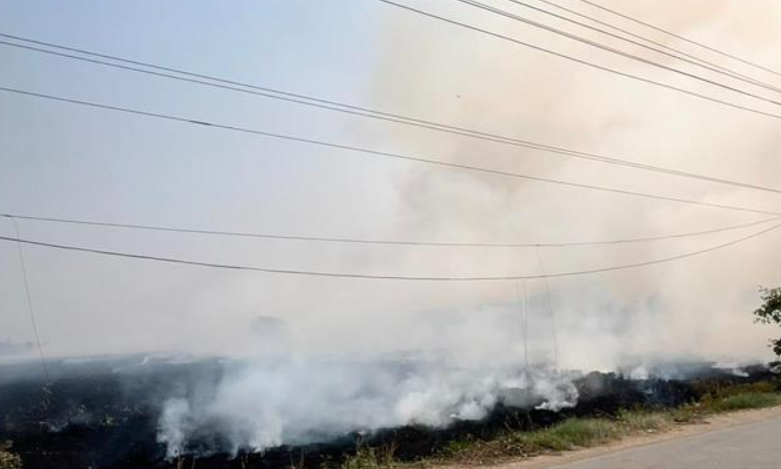On Thursday, Punjab reported 1,150 instances of stubble burning, bringing the total to 33,082 cases. Despite the state government’s appeals and warnings of legal action, many farmers in Punjab continued setting paddy straw on fire. The air quality indices in Haryana and Punjab remained in the ‘very poor’ and ‘poor’ categories. Following a surge in pollution levels, the Supreme Court directed Punjab, Haryana, Uttar Pradesh, and Rajasthan on November 7 to halt crop residue burning immediately. Of the reported farm fires, Moga had the highest with 225 cases, followed by Barnala with 117, Ferozepur with 114, Sangrur with 110, Bathinda with 109, and Faridkot with 101. In comparison, on the same day in 2021 and 2022, the state had recorded 523 and 966 farm fires, respectively. From September 15 to November 17, Sangrur led with 5,462 cases, followed by Ferozepur (2,998), Bathinda (2,696), Mansa (2,194), Moga (2,170), and Barnala (2,112). In the corresponding period of 2021 and 2022, the state reported 69,300 and 47,788 stubble burning incidents, respectively. Paddy straw burning in Punjab and Haryana is a major contributor to the hazardous air pollution levels in Delhi-NCR during October and November. In terms of air quality indices, Fatehabad in Haryana reported 409, followed by Faridabad (371), Bhiwani (362), Hisar (357), Sonipat (351), Gurugram (341), Rohtak (311), and Narnaul (301). In Punjab, Mandi Gobindgarh reported an AQI of 239, followed by Jalandhar (222), Ludhiana (208), Rupnagar (197), Amritsar (188), Patiala (172), and Khanna (141). Chandigarh, the Union Territory, had an AQI of 132. The AQI categories range from ‘good’ to ‘severe,’ with the current levels falling into ‘very poor’ and ‘poor’ categories.

















